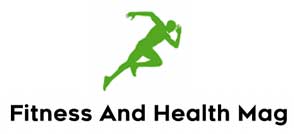Have you ever heard of the millennial gua sha technique? Find out all the benefits for the skin and how to use it to reduce wrinkles. Gua sha is a traditional Chinese technique born about 2000 years ago. It is also called the spoon technique, but to be precise, gua means “scrape” and sha “sand”. The skin is rubbed with a flat stone of jade or quartz in this treatment.
It is currently considered an alternative and natural therapy. It represents an additional possibility in treating some ailments. It helps relax muscles, soothes pain, promotes tissue drainage and stimulates circulation. It is also used for aesthetic purposes as an anti-aging treatment, as, according to some sources, it can reduce wrinkles.
The Accessories Of The Gua Sha
The primary tool for making the gua sha technique is a unique stone; it can be jade or quartz and is usually heart-shaped. In reality, each part of the body has a different shape. You can find this stone in the form of a fish, a bird’s foot or rectangular. In addition to this accessory, a jade roller, face oil or moisturizer is required to perform the massage.
The Benefits Of Gua Sha
Although the benefits of this technique have not been definitively confirmed by scientific research, its proponents say it helps treat more than one disease. This would also depend on the type of stone: soothing qualities are associated with jade; quartz calms inflammation, improves circulation and stimulates lymphatic drainage.
Migraine, Arthritis, Neck And Back Pain
Gua sha was used to treat symptoms of inflammation and chronic pain. It is believed to help mild migraines and stiff neck and back pain caused by adopting poor posture. The gua sha massage helps to release muscle tension. The research defines it as effective in treating chronic neck pain, better than other therapies such as the heating pad. Another clinical study has established its validity against migraines, even in patients who no longer respond to over-the-counter pain relievers.
Perimenopausal Syndrome And Breast Engorgement
Perimenopause, the phase that precedes menopause, is characterized by a series of symptoms such as:
- Sleep disorders.
- Absent or excessive menstruation with the presence of dysmenorrhea.
- Anxiety.
- Tiredness.
- Hot flashes.
Gua sha is effective in reducing symptoms of perimenopause in some women. According to another study, however, women who, after childbirth, undergo this massage run a lower risk of suffering from breast engorgement than the advantage of breastfeeding.
Beauty Treatments
Currently, great attention is paid to the application of gua sha for aesthetic purposes. In particular, massage falls into the category of anti-aging treatments. It is considered an effective weapon against wrinkles and skin flaccidity. It can be performed on the back, buttocks, arms, legs or various points of the face. The massage stimulates blood circulation and promotes the absorption of products.
Does It Have Any Contraindications?
As a non-invasive natural treatment, gua sha is safe. Rubbing or scraping the skin with the massage stone can leave marks that disappear in a few days. Instead, it is contraindicated in the following cases:
- After a recent surgery, especially on the area to be massaged.
- When taking anticoagulants or in the presence of bleeding disorders. The message could cause the rupture of small blood vessels.
- The stone should not be rubbed into cuts, wounds, edema, blood clots or ulcers.
How Is It Done?
The gua sha massage must be done by an experienced person. The movement of the stone is always upwards and in one direction only. The same is true if done on the face.
- Neck: Starting from the nape, with movements upwards and from the inside to the outside, the heart-shaped side is used, exerting more pressure on the base.
- The contour of the face: with a movement that goes from the chin to the ear, the shape of the face is followed, exerting a slight pressure in the final moment.
- Cheekbones: several movements are made, from the nose towards the cheekbones and these towards the ears, exerting light pressure at the end of each exercise.
- Nasogenic grooves: diagonally, from the corner of the mouth towards the chin; in the same way, towards the edge of the eyebrows.
- Eye contour: with the side of the stone in the shape of a heart, follow the line of the eyebrows until it ends at the temple, maintaining an upward movement.
- Forehead and area between the eyebrows: it is pressed between the eyebrows in an upward motion, up to the hairline, with the convex part of the stone.
Does It Have A Scientifically Proven Effect?
Critics of the gua sha technique argue that the treatment has no scientific basis. Furthermore, the massage undoubtedly tones the muscles and increases vascularity, but this happens regardless of the material used; that is, the stone would not be essential, and the effects are not due to it. However, several studies have shown that gua sha helps relieve neck pain after one week of treatment. In another research, we read that this technique helps regain mobility and flexibility, reducing the need for analgesic drugs.
Gua Sha: Better In The Evening And Without Makeup
The jade or quartz stone adapts to the skin’s contours and performs a stimulation, as long as the movements are performed correctly. Another tip is to serve the gua sha on cleansed and hydrated skin after removing the makeup well from the face. Made during the evening hours, specifically before going to sleep, it helps keep the skin young and relaxes the muscles.
ALSO READ: CASTOR OIL: THIS IS HOW IT IS USED FOR THE HAIR, SKIN, AND BODY
